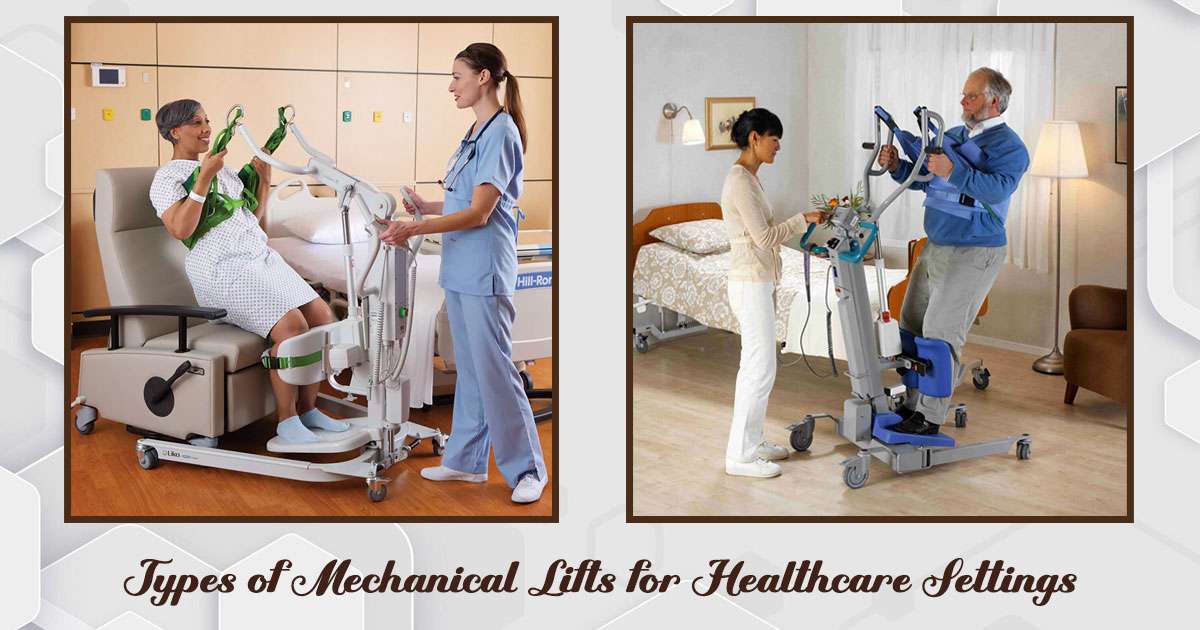13 Types of Lifts for Patients: Enhancing Mobility in Healthcare

In healthcare, mechanical lifts are incredibly important tools. They help staff move and care for patients safely and easily. These lifts aren’t just helpful; they’re essential for protecting patients and making sure healthcare workers don’t get hurt from lifting people manually.
Studies have shown that using these lifts is a game changer. For example, research by the Journal of Occupational Health found that when healthcare facilities started using mechanical lifts more, there were fewer injuries among the staff. This shows that these lifts aren’t only good for patient safety—they also make the workplace safer and more efficient for the people working there. By cutting down on the physical stress of moving patients, healthcare workers can focus more on providing top-notch care.
Mechanical lifts also make a big difference in how well healthcare services are provided. They play a key role in preventing falls and injuries among patients, ensuring that everyone in the facility is safer and can recover or get the care they need in a comfortable way.
There are different kinds of lifts for different healthcare settings. Whether it’s a busy hospital or a quiet long-term care home, each place might need a specific type of lift.
Types of Patient Lifts and What They Do
Patient lifts come in various types, each designed for specific functions to assist patients with mobility in healthcare settings. Let’s take a closer look at these lifts and their purposes:
1. Floor Lifts
- Function: These mobile lifts have wheels for easy movement, commonly used to transfer patients between beds, chairs, and stretchers within a facility.
- Benefits: Versatile and suitable for diverse settings, especially where permanent fixtures aren’t practical.
2. Ceiling Lifts
- Function: Installed on tracks in the ceiling, these lifts save space and electronically transfer patients across the room.
- Benefits: Ideal for limited spaces, requiring less physical effort from caregivers for complex transfers.
3. Sit-to-Stand Lifts
- Function: Assist patients in transitioning from sitting to standing positions, promoting independence and rehabilitation.
- Benefits: Help patients maintain muscle strength and participate in activities like toileting and dressing.
4. Bariatric Lifts
- Function: Built for heavier weight limits, ensuring safe handling of bariatric patients during transfers.
- Benefits: Provide extra security and comfort for larger patients, minimizing risks during movements.
5. Bath and Pool Lifts
- Function: Aid patients in getting in and out of bathtubs and pools, essential for therapeutic activities and personal hygiene.
- Benefits: Maintain patient dignity and independence while ensuring safety during water-based therapy.
6. Manual Hydraulic Lifts
- Function: Operated manually by caregivers using a hydraulic mechanism for short transfers.
- Benefits: Cost-effective, electricity-free option suitable for various settings, including home care.
7. Stretcher Lifts
- Function: Specialized for transferring patients who need to stay lying down, ensuring comfort and safety during movements.
- Benefits: Provide a stable platform for seamless transfers between beds and other units.
8. Pediatric Lifts
- Function: Designed for children, addressing the unique needs and sizes of younger patients.
- Benefits: Ensure safety and comfort for children in healthcare environments with adjustable and child-friendly designs.
9. Standing Frame Lifts
- Function: Assist patients in standing positions for therapy or daily activities, boosting circulation and muscle development.
- Benefits: Crucial for rehabilitation by encouraging partial weight-bearing activities.
10. Gantry Lifts
- Function: Portable overhead lifts for temporary use without permanent installation, offering flexibility in various care setups.
- Benefits: Ideal for home care or occasional needs, providing safe patient transfers.
11. Pool Access Lifts
- Function: Enable safe entry and exit from swimming pools, facilitating aquatic therapy and recreation.
- Benefits: Vital for individuals with mobility challenges to participate in water-based exercises and therapy.
12. Transfer Chairs
- Function: Combine wheelchair functionality with lifting support, streamlining transfers over short distances.
- Benefits: Minimize handling and discomfort during short-distance movements within facilities.
13. Inflatable Lifts
- Function: Use air pressure to lift patients gently, suitable for emergency situations or portable home care.
- Benefits: Lightweight, easy to store, and quick to deploy, reducing fall risks and ensuring swift assistance.
Each type of patient lift serves a specific role in healthcare settings, empowering facilities and caregivers to meet diverse patient needs effectively and enhancing the quality and safety of care provided.
Enhancing Patient Mobility with Lifts: Best Practices
Patient lifts are invaluable tools in healthcare, ensuring safe and efficient patient movement. To make the most of these lifts and prioritize the well-being of patients and caregivers, consider the following tips and techniques:
Tips for Using Patient Lifts Effectively:
- Training: Ensure staff are trained to operate the specific lift correctly to prevent accidents and ensure patient comfort.
- Assessment: Evaluate patient mobility before choosing a lift and transfer technique.
- Communication: Keep patients informed during transfers to reduce anxiety and ensure cooperation.
- Maintenance: Regularly check and maintain the lifts for optimal functionality and safety.
- Ergonomics: Use proper body mechanics to prevent caregiver injuries during transfers.
Patient Lifting Techniques:
- Positioning: Ensure the patient is positioned correctly in the sling before lifting.
- Stability: Confirm the lift’s stability and components before starting the transfer.
- Smooth Movement: Transfer patients with slow, gentle movements to avoid discomfort.
- Support: Provide adequate support to the patient’s body throughout the transfer.
- Post-Transfer Care: Ensure the patient is comfortable and secure after the transfer.
By following these guidelines, healthcare providers can maximize the benefits of patient lifts while prioritizing safety and dignity for both patients and caregivers. Adopting proper lift practices not only improves care quality but also fosters a culture of safety and excellence in healthcare environments.

